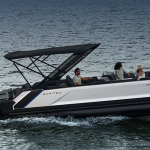The Virginia Tech University Helmet Lab released its inaugural Virginia Tech Helmet ratings for youth helmets, awarding Vicis Zero Youth a five-star rating and a score of 0.69. A lower score indicates better protection.
Several other competitor models also earned five-star ratings but all had significantly higher scores than the Vicis Zero Youth, which costs $495.00.
Other models earning a five-star rating were the Xenith Youth X2E+, costing 199.00, earning a score of 2.11; Schutt Youth F7, $569.95, earning a score of 2.35; Xenith Youth Epic+, $284.00, 3.13; Schutt Youth Vengeance A3+, $139.95, 3.40; Riddell Youth SpeedFlex, $324.99, 3.98; and Schutt Youth Vengeance A3, $109.95, 4.37.
Virginia Tech’s youth football helmet Star methodology rates helmets based on the impact frequency and severity specifically observed in youth play.
In a statement, Vicis noted that the Zero Youth features a deformable outer shell and unique columnar layer designed to slow impact forces like a car bumper. The lightweight, compact design is also tailored to youth anatomies and claims to offer the industry’s widest field of view, allowing young players to see more of the field and react more quickly to potential impacts.
“The Zero Youth was born from our relentless effort to protect young athletes,” said Dave Marver, Vicis CEO and co-founder. “We applaud Virginia Tech for helping parents and coaches make well-informed decisions, and are proud our helmet performed so well.”
Since 2011, Virginia Tech researchers have been providing unbiased helmet ratings that allow consumers to make informed decisions when purchasing helmets. The helmet ratings are the culmination of more than 10 years of peer-reviewed research on head impacts in sports and, according to Virginia Tech, identify which helmets best reduce risks of head injuries. The impact conditions and weightings are football-specific and inclusive of the broad range of head impacts athletes are likely to experience in youth football. Sensors embedded in a test dummy head record the linear and rotational acceleration from the impacts, and those numbers are used to calculate a STAR value that measures how much each helmet reduces the head’s acceleration – which translates to a lower risk of head injury for players. According to Virginia Tech, the more stars a helmet earns in the ratings, the better it is at reducing these risks.
“The traditional ‘shrink it’ approach to youth helmet design is not sufficient to protect young athletes,” said Dr. Sam Browd, Vicis’ chief medical officer. “At Vicis, it is our mission to help kids. This top rating reinforces our commitment to harvest the latest insights from medical research and technology to give players, parents, and coaches the best protection possible.”















